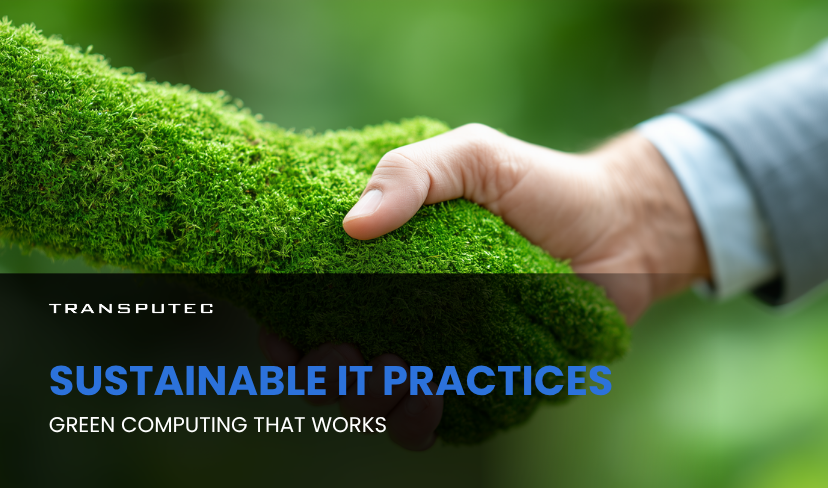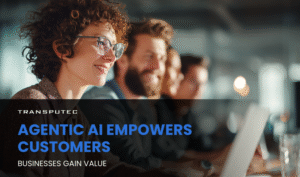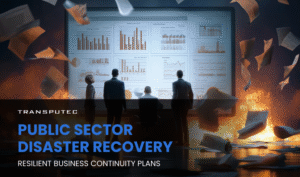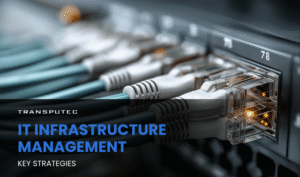Written by KRITIKA SINHA | MARKETING
Every day, companies unknowingly burn through energy, hardware, and opportunity in their IT operations. Servers run at full throttle for minimal tasks, devices are upgraded instead of optimised, and cloud services sprawl beyond control. Meanwhile, sustainability mandates grow tighter, energy costs soar, and consumers increasingly favour environmentally responsible brands.
The disconnect is clear: business leaders and IT departments want to go green, but few know where to start or how to sustain momentum. That’s where Sustainable IT Practices come in, not as a trendy buzzword but as a transformative strategy.
This blog explores how embracing Sustainable IT Practices can reduce operational costs, lower environmental impact, meet compliance goals, and build brand trust, all while maintaining IT performance. Backed by data and industry insights, we also share how Transputec leads this charge with practical, tech-driven solutions for modern businesses.
What Are Sustainable IT Practices?
Sustainable IT Practices refer to technologies, policies, and habits that reduce the environmental impact of IT operations. These include:
- Energy-efficient data centres
- Cloud resource optimisation
- Responsible e-waste recycling
- Longer device lifecycles
- Carbon footprint tracking in IT workflows
According to the International Energy Agency, data centres alone consumed 460 terawatt-hours (TWh) globally in 2022, more than the entire energy consumption of the UK. Yet, up to 40% of servers in enterprise data centres are either idle or underused (source: Uptime Institute).
The need for smarter, sustainable IT is urgent, not only for the planet but also for the bottom line.
Benefits of Adopting Sustainable IT Practices
1. Reduced Operating Costs
Energy-efficient servers and smart device management can significantly reduce power bills and hardware investments. Companies that deploy sustainable IT can save up to 30% in energy and maintenance costs annually.
2. Improved Compliance and ESG Ratings
With rising pressure from regulators, investors, and customers, integrating Sustainable IT Practices helps meet carbon disclosure requirements and boosts ESG scores, a growing factor in shareholder value.
3. Extended Hardware Lifecycle
Through predictive maintenance and reuse policies, companies can extend equipment lifespans, reducing both costs and e-waste. Transputec supports clients in refurbishing and securely repurposing devices for internal use or donation.
4. Enhanced Brand Reputation
Consumers are 88% more loyal to companies that help them live more sustainably (source: Forbes). Showcasing your commitment to green IT elevates brand perception and attracts conscious customers and partners.
Sustainable IT Practices in Action
Let’s explore five practical ways organisations, including Transputec’s clients, are using Sustainable IT Practices to unlock value.
1. Green Cloud Migration
Shifting workloads to cloud providers with strong renewable energy commitments (like AWS or Microsoft Azure) helps cut emissions. But cloud sprawl can negate those benefits if not optimised.
Transputec helps companies right-size their cloud infrastructure using usage analytics, shutting down dormant resources and selecting greener regions for deployment.
2. Sustainable Device Management
From selecting low-energy devices to responsibly recycling obsolete ones, device lifecycle management is crucial. Transputec’s “Device-as-a-Service” model includes energy-efficient device procurement, configuration, repair, and secure recycling.
3. Remote Work Infrastructure
Remote and hybrid work can save carbon emissions, but only with the right support. Virtual desktops, smart collaboration tools, and energy-optimised VPNs allow employees to work sustainably from anywhere, another area where Transputec delivers tailored solutions.
4. Data Centre Energy Audits
Cooling, lighting, and unvirtualised servers account for major inefficiencies. Transputec partners with clients to audit, redesign, and virtualise legacy infrastructure, helping reduce data centre energy usage by up to 50%.
5. E-Waste Reduction Programs
Globally, over 53 million metric tonnes of e-waste are generated each year. Transputec helps organisations reduce their contribution by recovering components, offering refurbishing programs, and managing secure disposal in line with WEEE regulations.
Ready to Make Your IT Greener?
Contact us today to connect with an expert and get started on optimising your IT operations.
Challenges in Adopting Sustainable IT Practices
1. Lack of Visibility and Measurable Data
One of the biggest hurdles is not knowing where the inefficiencies lie. Many organisations don’t track energy consumption, device usage, or carbon emissions related to their IT operations. Without accurate data, it’s hard to identify problem areas, measure progress, or justify investments in sustainable changes. Tools for monitoring energy usage and sustainability metrics are often missing or underutilised.
Solution: Use IT performance and sustainability monitoring tools. Transputec helps organisations gain visibility with audits and tailored analytics.
2. High Initial Costs and Budget Constraints
Although Sustainable IT Practices often save money long-term, the initial investments, such as upgrading to energy-efficient hardware, virtualising infrastructure, or restructuring cloud environments, can seem expensive. Budget holders may struggle to prioritise sustainability when other short-term projects compete for funding.
Solution: Focus on quick wins and gradual transitions. Transputec helps prioritise low-cost, high-impact changes with strong ROI justification.
3. Organisational Resistance to Change
Shifting to sustainable IT often requires a change in mindset, behaviour, and processes. Employees may resist new workflows, IT teams may be hesitant to adopt new tools, and leadership may view green IT as a “nice-to-have” instead of a strategic priority.
Solution: Invest in awareness, training, and change management. Transputec supports organisations with stakeholder education and seamless integration of sustainable tools.
4. Limited In-House Expertise
Sustainability in IT is a specialised area. Internal IT teams may not have the necessary knowledge about green cloud architecture, energy optimisation, or e-waste regulations. As a result, sustainability initiatives stall due to a lack of expert guidance.
Solution: Partner with experienced IT sustainability providers. Transputec offers expert-led strategies, audits, and hands-on support to fill the knowledge gap.
5. Difficulty Aligning IT Goals with Sustainability Targets
IT departments often focus on performance, uptime, and security, while sustainability goals are set by ESG or compliance teams. Without clear collaboration, it’s difficult to align operational IT plans with broader environmental targets, leading to siloed efforts that achieve little.
Solution: Create a unified IT and sustainability strategy. Transputec helps align cross-functional goals, integrating sustainability into every IT decision and roadmap.
Why Sustainable IT Practices Matter for Transputec ?
For over 35 years, Transputec has been at the forefront of IT innovation. As sustainability becomes central to digital strategy, Transputec sees Sustainable IT Practices not just as an add-on but as a core service principle.
Our clients are increasingly seeking end-to-end green IT services from cloud architecture that cuts emissions to device management that reduces landfill waste. At Transputec, we integrate sustainability into every layer of IT support and transformation.
We do this through:
- Sustainable procurement strategies
- Device lifecycle management
- Energy usage audits
- Carbon reduction roadmaps
- Green cloud migration and hybrid solutions
This isn’t just about checking ESG boxes. It’s about designing IT that works smarter, lasts longer, and leaves a lighter footprint — values we embody in every client project.
Conclusion
From reducing costs and carbon emissions to building future-ready infrastructure, the benefits of Sustainable IT Practices are too significant to ignore. As businesses strive to meet ESG goals and satisfy stakeholder expectations, sustainable IT is proving to be both a responsibility and a competitive advantage.
In this blog, we’ve explored what Sustainable IT Practices are, why they matter, how Transputec enables them, and how you can begin your journey. From green cloud migration to responsible device management, the shift toward eco-conscious computing is happening, and it starts with taking that first step.
Ready to make your IT greener, leaner, and smarter?
Contact us today to connect with an expert and get started with Transputec’s Sustainable IT solutions. Let’s build a more efficient and responsible digital future together.

Ready to Make Your IT Greener, Leaner, And Smarter?
Contact us today to schedule a consultation with our experts.
FAQs
1. What are Sustainable IT Practices, and why do they matter?
Sustainable IT Practices are eco-friendly approaches to managing IT operations. They matter because they reduce environmental impact, lower costs, and improve efficiency — all without sacrificing business performance.
2. How does Transputec support businesses with IT sustainability?
Transputec provides tailored services including sustainable procurement, green cloud migration, carbon audits, and e-waste management. We help businesses implement practical changes aligned with their goals.
3. Are Sustainable IT Practices expensive to implement?
Not necessarily. Many initiatives, like server virtualisation or power management, reduce costs almost immediately. Transputec helps clients prioritise high-impact changes for fast ROI.
4. What industries benefit most from Sustainable IT Practices?
Any sector can benefit, but especially those with large IT footprints like finance, healthcare, retail, and logistics. Transputec supports clients across industries in aligning IT with sustainability goals.
5. Does Transputec offer sustainability audits or assessments?
Yes. Transputec offers a complimentary IT sustainability audit to help businesses understand their environmental impact and build a strategy.






